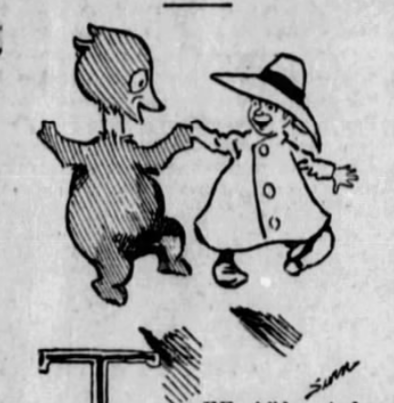James Swinnerton, Bill Watterson, Henry Jackson Lewis, Leonard Starr, Walt Disney and Company
“Jimmy Swinnerton came to the desert to die in peace – and found so much beauty to paint that he crossed up the doctors and got well.”
Years before, in 1892, Hearst had plucked the 16-year-old artist out of the California Art School in San Francisco depositing him at the San Francisco Examiner where he started the “California Little Bear” cartoon series, said to be the first time a comic cartoon regularly appeared in an American newspaper.

Tracy Conrad, for The Desert Sun, tells of comic strip godfather Jimmy Swinnerton‘s sojourn to the American Southwest and its boon to Swin’s life and art.
He developed a deep affection for the American Southwest and its indigenous people. He said, “No one can become bigoted and narrow in the midst of broad desert vistas and great canyon walls.” Swinnerton particularly loved the Native American children he encountered. He memorialized them in a cartoon strip for Hearst’s “Good Housekeeping” called “Canyon Kids” that appeared in every issue of the magazine for decades.
It’s been 27 years since Calvin and Hobbes hopped on a toboggan, sledding into the snowy unknown and out of our lives.
Except they never truly did.

… the pure love of Watterson’s work endures beyond generational boundaries. It’s silly, it’s philosophical, it gets a little dark sometimes, but it’s all framed within the innocent wonder of childhood that many adult artists try to embrace but few seem to grasp.
Cracked.com nominates some Calvin and Hobbes strips for the Comedy Hall of Fame.
H.J. Lewis was born in 1837 or 1838 in Water Valley, Miss…
By 1879, he was selling drawings of city and Arkansas River scenes to the national publication Harper’s Weekly, and he later sold similar drawings to Frank Leslie’s Illustrated Newspaper. On Oct. 25, 1882, a Pine Bluff Commercial article referred to him as a “caricaturist and pencil artist” whose sketches “of both imaginary and real scenes are wonderfully correct,”

Arkansas Online profiles Henry Jackson Lewis, the first Black political cartoonist.
In January 1889, Lewis moved from Pine Bluff to Indianapolis, where he worked for the Freeman, a new “national illustrated colored newspaper.”
Lewis has been called the first Black political cartoonist for his Freeman work. His earlier drawings (February through December 1889) touched on a variety of topics, but most notably included several sharp attacks on the policies and personalities of the new Republican administration of President Benjamin Harrison.
Cartoonist Leonard Starr idolized his older brother, who was killed fighting in World War II. When Starr grew up and began his comic strip On Stage, he modeled a character after his brother.
The character, Grisha Volkov, was a dashing Russian rogue (Starr’s family roots were in Russia). Starr made his character as tough and confident as Starr remembered his brother. Volkov won every battle, even the one Starr’s brother lost.

David Apatoff appreciates the art of Leonard Starr and mourns the loss of such talent.
One by one, I grew to appreciate the range of talents that combined to make On Stage: Starr’s brushwork, his timing, those subtle facial expressions, his staging. By the time I got to high school I even loved Starr’s intelligent dialogue, which I believe was unique in the history of comic strips.
Mickey Mouse (titled Mickey Mouse and Friends from issues #257-303) is a long-running comic book series starring Mickey Mouse, first appearing in 1941 as part of the Four Color one-shot series. It received its own numbering system with issue #28 in 1953…
Two major artistic influences on the appearance of Mickey in comics are Floyd Gottfredson, who drew the Mickey Mouse daily newspaper strip from 1930 to 1975, and comic book artist Paul Murry, who drew Mickey stories from 1950 to 1984.



Disney gives us the publication history of the Mickey Mouse comic book.
Publishing Mickey comic book stories in the United States was pioneered by the third Mickey Mouse Magazine series (1935–1940). Initially published by Hal Horne, it had artwork by John Stanley and text pieces by Irving Brecher. By mid-1936, Horne turned over the magazine to Kay Kamen who oversaw merchandising for Disney. Kamen the following year recruited Western Publishing to handle production and publication.
More Disney History
On October 27, 1954, Walt Disney paused in the middle of a television show saluting his soon-to-be-realized dream, Disneyland, to make one unforgettable observation.
“I only hope that we never lose sight of one thing – that it all started with a mouse.”

smART Magazine details the pre-WWII history of the Disney company in four parts.
Silly Symphonies And Serious Dreams
